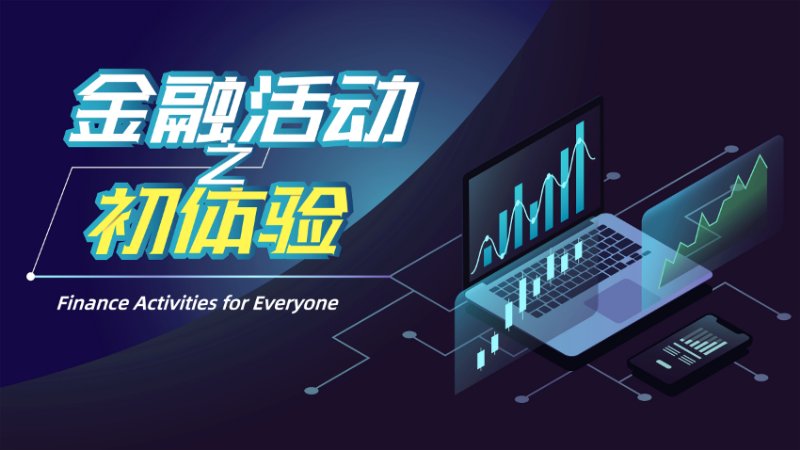
当前课程知识点:Tourism Policy and Planning > Week 5 Special Issues and Case Study > 5.2 From Capacity to Overtourism > 5.2.6 Visitor Management Models (1)
返回《Tourism Policy and Planning》慕课在线视频课程列表
Professor Geoffrey Wall will highlight four topics of visitor management models in this session.
Which one is more important to protect the environment or to develop tourism?
Would you like to share your thoughts on this in the comments section below?
返回《Tourism Policy and Planning》慕课在线视频列表
我们在研究和规划方面强调的
另一个领域是开发游客管理模型。
这些都是主要框架,
描述了做出明智的管理决策所需的信息。
这些决策将使游客拥有美好的时光
并且保护环境。
目前已经开发了大量的模型,
通常由第一个提出者用词来描述它们,
如Vim、Tomm、Vamp、Verp,
以及游客信息管理、
游客活动管理、
流程管理等等。
这些模型相当复杂。
它们在细节上有所不同,
但它们的开发成本相当高,
而且正如我所说,
它们不能很好地运行。
我的意思是在一个地方开发的模型
在另一个地方可能不容易使用。
因此,人们花了很多精力来开发管理系统,
但它们并没有像人们所建议和希望的那样
得到广泛的应用。
有一些详细的规划已经使用这些模型开发出来了,
例如澳大利亚的袋鼠岛和杰诺兰洞穴,
以及中国的莫高窟。
但由于所需的成本和专业水平,
这似乎也是一条死胡同。
接下来,
让我考虑一下影响研究和规划管理决策
所带来的一些挑战。
我将重点介绍四个主题:
我在演讲中一直描述的影响过程的复杂性,
文化的重要性,
气候变化,
以及做出旅游规划和管理决策所需的行政结构。
我不能很详细地进行概括性的描述。
尽管我确定了四个重点,
但我强调的比这些重点更多。
首先,让我们考虑复杂性。
从广义上看,
我们要问的问题是,
我们规划和管理预订开发连续体的目的是什么?
全面保护环境是我们的主要目标吗?
还是为大量愿意改变环境的人提供经验?
或者我会试着做一些介于两者之间的事情。
通常,这两个极端是不能接受的。
换句话说,
我们不能单纯保护,
如果我们想要发展旅游,
很显然就必须要有游客。
但我们不想要太多的人,
因为环境会以我们不想要的方式发生改变。
所以,一个经常被问到的问题是,
我们想要达到什么程度的保护与发展的统一?
我们还需要认识到,
游客对目的地有着不同的期望和体验。
我回想起第一次去加拿大的北极圈时,
我惊讶地发现
我已经徒步旅行了大约一个小时,
我仍然可以看到我离开的地方。
而我拥有好视野的原因是那里没有树。
所以,我沿着这条路走了很长一段时间,
但风景并没有发生太大的变化。
在蒙古草原上,
同样有广阔的开放空间,
人们可以从几英里外看到。
然而,这使得旅游业的规划变得非常困难,
因为环境的一个小的变化,
例如一个可接受的建筑,
可以在很长一段距离内看到,
但也破坏了视野。
这些地区似乎有很强的弹性,
可以容纳大量游客,
但事实可能并非如此。
在林区,树木把人也分开了,
所以在一个小的区域里游客更容易感到孤独。
加拿大有一个笑话,
讲的是从草原去参观落基山脉著名公园的游客。
当他们被问到他们对风景有什么看法时,
他们回答说他们看不到风景,
因为山挡住了他们的去路。
这可以看出来自不同地方的人有不同的期望。
我有幸在印度尼西亚苏拉威西岛的
一些自然保护区工作,
我参观过的非常特别的自然保护区,
有三组黑色猕猴,
类人猿。
第一次去那里,
我花了很长时间才发现一些黑色的猕猴。
最近当我再过去的时候,
我发现公园的入口处就有很多黑色的猕猴。
所以,那里有更多的黑色猕猴,
比我第一次去那里的时候更容易接近。
但它们不再表现得像黑猕猴,
因为他们已经习惯了游客。
一只黑猕猴用旅游者的相机拍了一张自拍照。
而事实上,
当人们会想知道谁拥有黑猕猴所拍照片的版权。
所以,这有一个时间的变化。
最近一项研究表明,
猕猴的数量减少了。
也许是这样,
但我不认为这是发展旅游业的结果。
我认为这是因为在一个相对较小的地区
有太多的黑猕猴的结果。
因此,我们所说的环境、经济和旅游之间的关系
非常复杂。
我们还需要认识到许多非常珍贵的景观都不是纯天然的。
我出生在英国地区,
在我曾经生活过的丘陵或草原或其他一些地区
都是非常宜人的,
非常自然的,
或者看起来非常自然的。
但是它们一直这样,
允许绵羊在上面吃草。
如果绵羊不在那里,
那么草地就会被树木所取代。
因此,为了拥有那迷人的风景,
必须放牧。
在世界各地的水稻梯田中,
无论是在印度尼西亚的巴厘岛,
还是越南的红河,
种植这些梯田都是很重要的。
你不能只是简单地保留和保护。
因为如果没有农民耕种稻田,
那么这些梯田最终就会消失。
因此,在这样的情况下,
开展保护工作是很难的。
刚刚成为世界遗产的红河这个例子中,
不幸的是,
农民不知道他们的未来可能会怎么样。
但是,如果没有耕种,
而是从旅游业的收益得到补偿,
那么很有可能他们会停止耕作。
在这种情况下,
梯田就不存在了,
梯田就不存在了,
要求建立世界遗产的理由就会弱化。
当你阅读文献和听人谈论时,
你会听到许多简单的陈述,
常见的是只拍照和留下脚印。
但这就是问题所在,
千千万万游客一个接一个的拍照是一个问题。
不管是一头想要猎杀的狮子,
最佳照片当然是拍摄狮子捕猎,
但如果被游客所乘坐的巴士所尾随,
人们都想拍到狮子猎杀猎物的照片,
那么狮子就很难捕猎到食物。
如果你是一个社区的居民,
有大量的游客想要给你拍照,
因为你很漂亮,
或者你跳舞跳得很好,
或者你的穿着很有趣,
这也会变得单调乏味。
那么拍照就会成为一个问题。
而我生活在一个非常传统的社区,
没有汽车,
只使用马,
没有电。
他们不认同拍照,
因为传统的基督教信仰不可以拍摄照片。
所以,给他们拍照违背了他们的信仰。
同样,留下脚印也是一个问题,
成千上万的人走在同一地区破坏了道路,
破坏了植物,
破坏了台阶,
这就是为什么有些地方
要求游客穿鞋或用鞋套套住鞋子以减少破坏。
所以,我们只拍照片,
只留下脚印听起来真的很不错,
但通常是照片和脚印造成了一些问题。
另一种说法是,
在为时已晚之前快来看一下,
因为这是最后的旅游机会了。
在这里,
我们有一种稀有的动物,
一种稀有的植物,
一种稀有的蝴蝶,
快来看看吧,
趁它们消失之前。
这是另一种对稀缺的资源施加更多的压力的方式,
这将使得它在未来不会存在。
所以,我们必须小心地对待我们所说的和我们的行为。
因为一些声明起初听起来很好,
但实际上促使了一些问题的发生。
在管理我们所讨论的影响方面,
存在着各种各样的挑战,
建立能够适当应对旅游影响的管理结构并不容易。
旅游业具有全球性的影响;
人们正在世界各地旅行。
我们说过世界上没有不受旅游业影响的地方。
然而,许多影响必须在当地进行管理。
因为它们发生在特定的地方,
特定的遗址,
特定的社区
和特定的公园。
因此,以行政方式处理全球问题和地方影响
是一个挑战,
这是一个很难解决的问题,
也许可以留待下一次讨论,
即关于建立新的政府结构来管理我们所讨论的影响。
这张照片是我在桂林和阳朔之间的漓江上拍摄的。
显示了游客拥挤的问题
这是自我第一次到这个地方20年之后发生的改变。
对我来说,
在中国最特别的体验之一
是可以在壮观的石灰岩山峰上游弋数小时。
大约20年前我第一次来时,
这里只有一条船。
我在河边的时看不到其他的船。
几年前我去过那里,
那条河变得很拥挤。
那些船在试图超越对方到达泊位时发出汽笛声。
一艘船的污染传递到后面的船上。
现在我们有一条拥挤的河流,
就像我们有拥挤的高速公路一样。
这仍然是值得做的,
因为宏伟的石灰岩山峰仍然在那里。
但体验却已随时间发生了变化。
-1.1 Tourism Planning and Policy
--1.1.1 Link Between Policy and Plans
--1.1.2 Tourism Policy Is Influenced by Multi-sectoral Links
--1.1.3 Policies Are "Wish Lists."
--1.1.4 Policies Impacting the Tourism Sector
--1.1.5 Who Formulates Policies?
--Discussion: Is Tourism Policy Sustainable in Your Respective Countries/Regions?
-1.2 Planning Principles
--1.2.2 Reasons for a Tourism Plan
--1.2.3 Planning Principles (1)
--1.2.4 Planning Principles (2)
--Article:Tourism Policy and Planning for Developing Countries
-1.3 Strategic Planning at Different Levels
--1.3.1 Planning at Different Levels
--1.3.2 Planning for Tourism in the Future
--Week 1 Quiz
-2.1 Planning in the Context of Tourism Development
--2.1.2 Tourism Planning for Destination Development and Management
-2.2 History of Tourism Planning Globally and Domestically
--2.2.1 Global and Domestic History of Tourism Planning
--2.2.2 Participants in Tourism Planning
--2.2.3 What's the Difference about Tourism Planning between China and the Western Country?
--Discussion: What's the Difference about Tourism Planning between China and the Western Country?
-2.3 Tourism Planning Processes and Practices
--2.3.1 Theory and Practice of Tourism Planning
--2.3.2 Resource Inventory and Demand Analysis
--2.3.3 Structure Planning for Tourism Growth
--2.3.4 Planning for Tourism Products
--2.3.5 Planning for Supply System and Regulation
--Article: Climate Change and Tourism: A Scientometric Analysis Using CiteSpace
-2.4 Changing Trends in Tourism Planning
--2.4.1 Changing Trends in Tourism Planning
--2.4.2 How Should China Develop Domestic Tourism in the Belt and Road Initiative?
--Week 2 Quiz
-3.1 Tourism Destination Area Planning
--3.1.1 The Key Terms of Tourism Destination Area Planning
--3.1.2 Tourism Destination Area Planning Approaches
--3.1.3 Tourism Destination Area Planning Process And Some Key Tools, Some Readings
--3.1.4 Tourism Destination Area Planning Process And Some Key Tools, Some Readings
-3.2 Sustainable Tourism Product Development
--3.2.1 The Key Terms & Framework of Sustainable Tourism Product Development
--3.2.2 Sustainable Destination Product Development Process
-3.3 Developing Tourism Events & Experiences
--3.3.1 Assessing And Evaluating Destination Plans
-3.4 Assessing and Evaluating Destination Plans
--3.4.1 Assessing And Evaluating Destination Plans
-3.5 The Hot Topics of Tourism Planning Technology
--3.5.1 What Should Be Pay Attention to When We Make Tourism Planning in China?
--3.5.2 How to Improve Tourism Experience During Tourism Planning Process
--3.5.3 What Are the Impact And Challenge of AI Technology to Tourism Planning?
--3.5.4 How Should We Developed Community Based Tourism Planning?
--Week 3 Quiz
-4.1 An Introduction to Tourism Impacts
--4.1.1 An Introduction to Tourism Impacts(1)
--4.1.2 An Introduction to Tourism Impacts(2)
--Discussion:Where Are You Coming From and Why Are You Taking This Course?
-4.2 The Economic Impacts of Tourism
--4.2.1The Economic Impacts of Tourism(1)
--4.2.2 The Economic Impacts of Tourism(2)
--Discussion:Could You Describe Both the Positive And Negative Aspects of Economic Impacts In Your Own
-4.3 The Socio-cultural Impacts of Tourism
--4.3.1 The Socio-cultural Impacts of Tourism
--Discussion:Could You Explain TheThree Specific Phenomena About Socio-cultural Impact
-4.4 The Environmental Impacts of Tourism
--4.4.1 The Environmental Impacts of Tourism
--Discussion:How Can Tourism Development Contribute or Make A Damage to The Environment Are Explained?
--Week 4 Quiz
-5.1 Host-guest Interaction and Tourism Development in Two Regions: Yunnan Province and Overseas
--5.1.1 Yunnan Province Tourism Development Master Plan 2011-2020
--5.1.2 IMT-GT Tourism Sector Strategy 2017-2036
-5.2 From Capacity to Overtourism
--5.2.1 The Study of Tourism Impacts
--5.2.2 Tourism Context and Impacts
--5.2.3 Measurement of Impacts
--5.2.4 Management Approaches and Related Concepts (1)
--5.2.5 Management Approaches and Related Concepts (2)
--Discussion: What is carrying capacity?
--5.2.6 Visitor Management Models (1)
--5.2.7 Visitor Management Models (2)
--Article: Behind the Masks: Tourism and Community in Sardinia
-5.3 Tourism Planning and Holistic Tourism: Governance and Innovation for A Destination Country
--5.3.1 Holistic Tourism: A Destination Governance Tool
--5.3.2 How Should Rural Area Benefit from Holistic Tourism?
--Week 5 Quiz
--Final Discussion and Reflection
--Final Quiz
